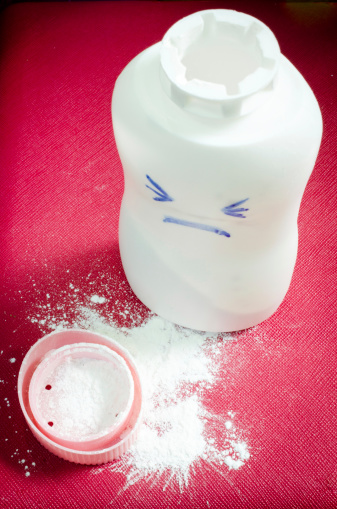J&J Ordered to Pay $25 Million in Talc Powder Verdict

Plaintiff Donna Olson, 66, alleged that years of breathing in particles of talc powder manufactured by Johnson & Johnson resulted in her development of mesothelioma, a rare lung cancer caused by asbestos exposure. Jurors in New York agreed with the plaintiff and ordered the defendants to pay $25 million in compensatory damages. That verdict came after a trial held in the New York City Asbestos Litigation (NYCAL) Court.
The substantial jury award may only be part of the payment J&J is ordered to pay. The jurors in the case are expected to meet again during the last week of May, 2019 to begin deliberations regarding punitive damages. In a civil lawsuit, punitive damages may be awarded for the purpose of punishing a defendant for conduct that is particularly egregious.
Allegations of Olson’s complaint
During the trial, the plaintiff testified that she had used the defendants’ talc powder from the time that she was about eight years old until 1984. She testified that she had exposure from her mother’s use of talc powder early in her life, and later, from her own use of the product.
Mesothelioma is a very specialized type of cancer, resulting only from exposure to asbestos. It can take decades for it to develop after a person is exposed to asbestos. Olson, and many other plaintiffs who have filed similar talc powder lawsuits, claim that Johnson & Johnson’s talc powder products contain asbestos. The company has insisted for years that its products are safe, contain no asbestos, and do not cause cancer. The company continues to stand by its assertions.
However, evidence has come to light that suggests personnel at the company did come across reports indicating the presence of asbestos in talc powder. The defendants have been required to share thousands of documents as part of the pre-trial discovery process in its talc powder lawsuits. Among those documents are internal memos that indicate from at least 1971 to the early 2000s, quality tests for both raw talc and finished products sometimes revealed the presence of small amounts of asbestos. The internal documents revealed that company executives and others were concerned about how to address the problem. However, they failed to disclose the test reports to the public.
Olson and other plaintiffs assert that J&J failed in its responsibility to disclose the potential for harmful ingredients in its talc powder products.
J&J expected to appeal the verdict
The recent $25 million jury award for Donna Olson is surely welcome news for the plaintiff; however, it’s expected that Johnson & Johnson will appeal the verdict. The company claims that multiple evidentiary errors were made during the trial. Namely, J&J asserts that the testimony of William Longo, an expert witness for talc powder plaintiffs, was fraught with legal and evidentiary errors. The defendants have accused Longo of misleading the court.
Regardless, other talc cancer lawsuits continue to move forward against Johnson & Johnson. The Olson case was the first of four to be heard by the NYCAL court. The Olson case also marks the first time that punitive damages will be considered in an asbestos case in that particular court since the 1980s.
Additional resources:
- Bloomberg, Johnson & Johnson Loses $25 Million Talc Verdict in New York, https://www.bloomberg.com/news/articles/2019-05-21/johnson-johnson-loses-25-million-new-york-talc-verdict
- Reuters, J&J hit with $25 million N.Y. talc verdict, wins in South Carolina, https://www.reuters.com/article/johnsonjohnson-cancer-lawsuit/jj-hit-with-25-million-n-y-talc-verdict-wins-in-south-carolina-idUSL2N22Y1UT

